Sankai Juku: Meguri: Teeming Sea, Tranquil Land — read my review
++READ MY REVIEW FOR SANTA BARBARA’S ARTS WEEKLY VOICE MAGAZINE OF THE JAPANESE BUTOH DANCE THEATER TROUPE SANKAI JUKU AT THE GRANADA THEATRE IN SANTA BARBARA ON OCTOBER 4 2019
Sankai Juku – Androgyny and Primal Expression
Mouths blackened and frequently agape in the manner of Edvard Munch’s Scream, their white floor-length waist wraps exposing with macabre sensuality a bit of leg and slashes of interior fabric color matching each scene’s simplistic but powerful lighting design changes, choreographer/director Ushio Amagatsu’s world famous Tokyo-based Sankai Juku company of eight male dancers performed his seven-part Meguri: Teeming Sea, Tranquil Land (2015) as the 2019-20 season-opening event for UCSB Arts & Lectures at Santa Barbara’s Granada Theatre last Friday night. Mesmerizing both novice viewers and seasoned aficionados, a full house, many of them college students, remained silently focused for more than an hour (there was no intermission) as Amagatsu’s hauntingly beautiful work unfolded. The power of living art.
Sankai Juku has perfected the Japanese dance theater style known as butoh. A product visually and psychologically of the atomic bomb, twentieth century butoh surfaced in 1951. Men naked from the waist up and caked crudely in white powder perform organic, slow motion movement that at the same time twinkles discreetly with miniscule and intensely disciplined facial expression and finger/hand signals. Also known as ankoku butoh (the dance of utter darkness) there is something about the look and manner of this distinct style of performance theater that pushes primordial as well as post-apocalyptic buttons. White body and face powder for example, inspires surreal and androgynous fantasies of primitive hominid cave and mud existence, but also resurrects searing geisha memories of the blast-blistered victims of Nagasaki and Hiroshima.
Using a black box stage with but one strikingly simple and ultimately profound back wall set which at the beginning of Meguri: Teeming Sea, Tranquil Land looked like ordinary brick but in time and changing light revealed effigies of fossils and marine creatures from the Paleozoic, Amagatsu submerged the audience in a cluster of gently tinkling percussive and low string sounds for the mostly solo first sequence, The Call from the Distance. Heeding the meaning of Meguri, the musical score circulated like water or solar systems or universes through the entire piece; an arresting soundscape collaboration between composers Takashi Kako, YAS-KAZ and Yoichiro Yoshikawa.
The second sequence Transformation on the Sea Bottom began with a low, rumbling electronic score and four dancers on their backs in a circle, raised hand and leg movements in slow motion the focus of interest - sea anemone the successful illusion. The sea-bottom currents becoming agitated, the four rose to dervish - the back wall becoming more textured and organic. The third section, Two Surfaces began with three dancers entering in silence, the lighting ambiance one of blue water imagery in sound and movement; a constant flowing force. The form and structure of this section was particularly disciplined, the dancers engaging in some of the most complicated exchanges of the evening. The soundscape for the fourth movement, Premonition – Quietude – Tremblings presented the musical illusion of wind and storm over a rumbling sea floor and featured beautiful ensemble unison movement from company members, particularly in the Tremblings segment.
Sounds of the mechanical world framed Forest of Fossils, the fifth section of Meguri. A thin layer of soil on stage was part of the performance design for the work as a whole and the fascinating effect of loose dirt and dust kicked up by the dancers during Forest of Fossils gave the section a Rite of Spring atavism and cadence; ceremony and narrative couched in primordial sounds that could have been the low-pitched honks of a brontosaurus (thunder lizard). Weavings and Return, the last two sections of Teeming Sea, Tranquil Land were also the most vigorous and moving, the entire company of eight on stage in various combinations and sequences. The textured wall, now brightly lit, allowed closer examination of visual artist Roshi’s magnificent conceptualization of fossil sea lilies. But as the last section, Return recapped several choreographic leitmotifs from the preceding movements and the dancers performed their final dervish soliloquy, the lights dimming, the score drifting away, thoughts about our precious and fragile ecosystem remained worrying.
Daniel Kepl | Performing Arts Review
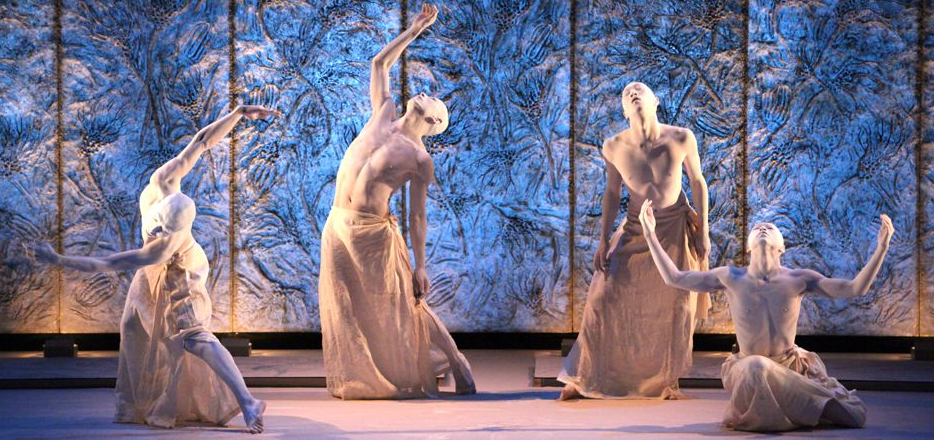
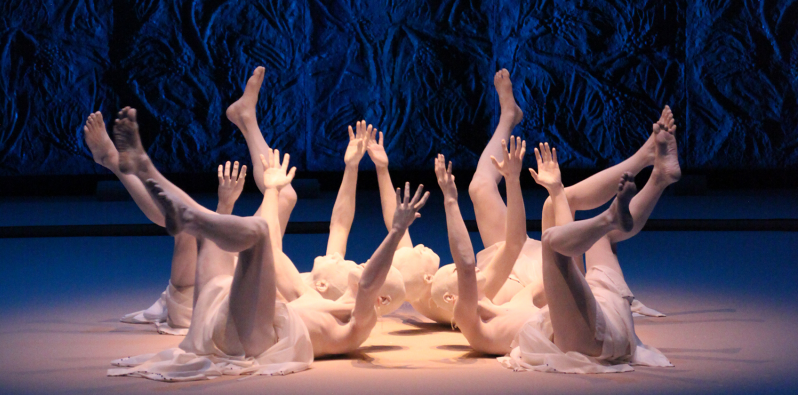
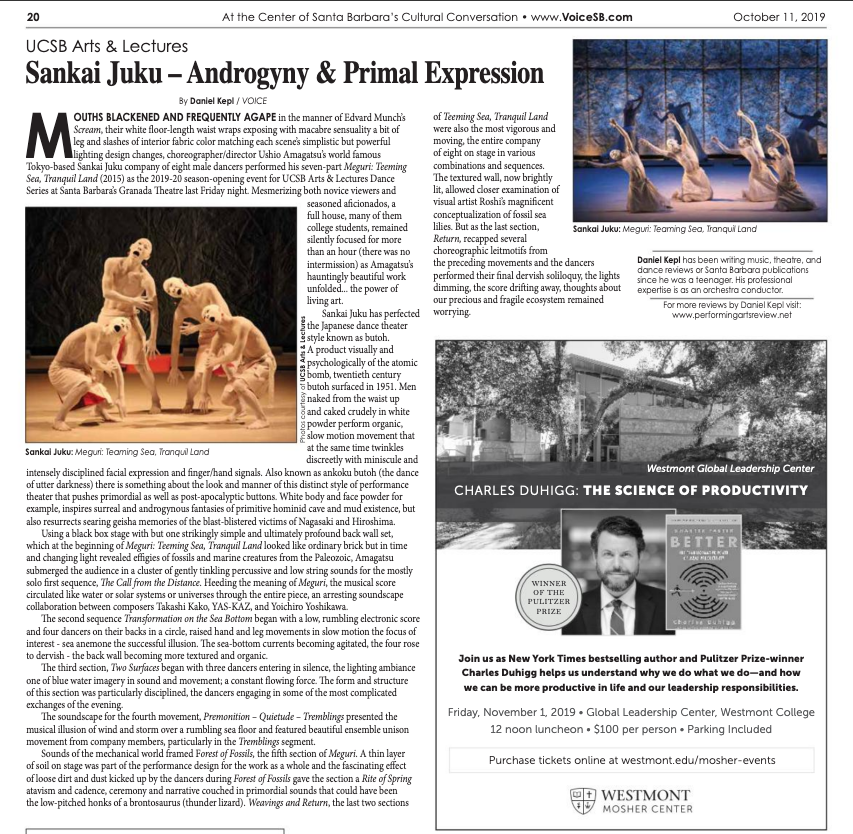

SANKAI JUKU Official movie "MEGURI" 山海塾 - Butoh Dance 舞踏 -
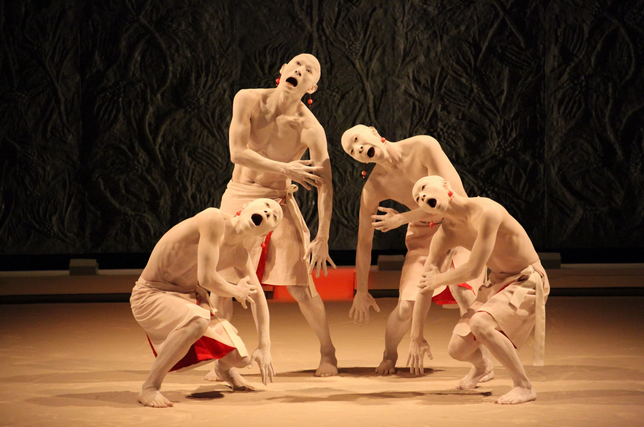

SANKAI JUKU Official movie "MEGURI" 山海塾 - Butoh Dance 舞踏 -
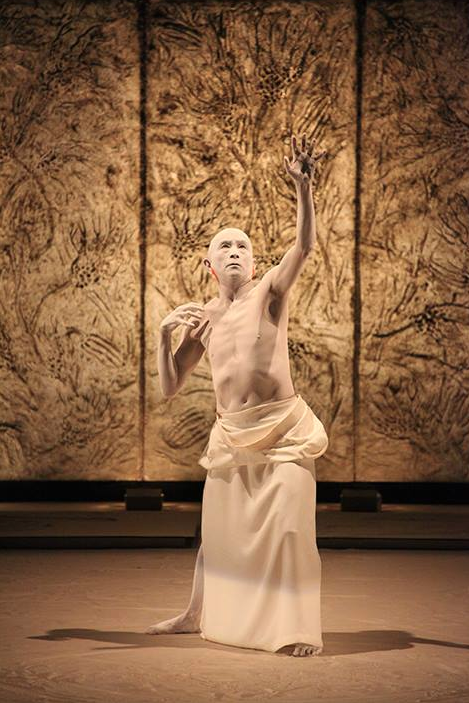

Sankai Juku - Meguri
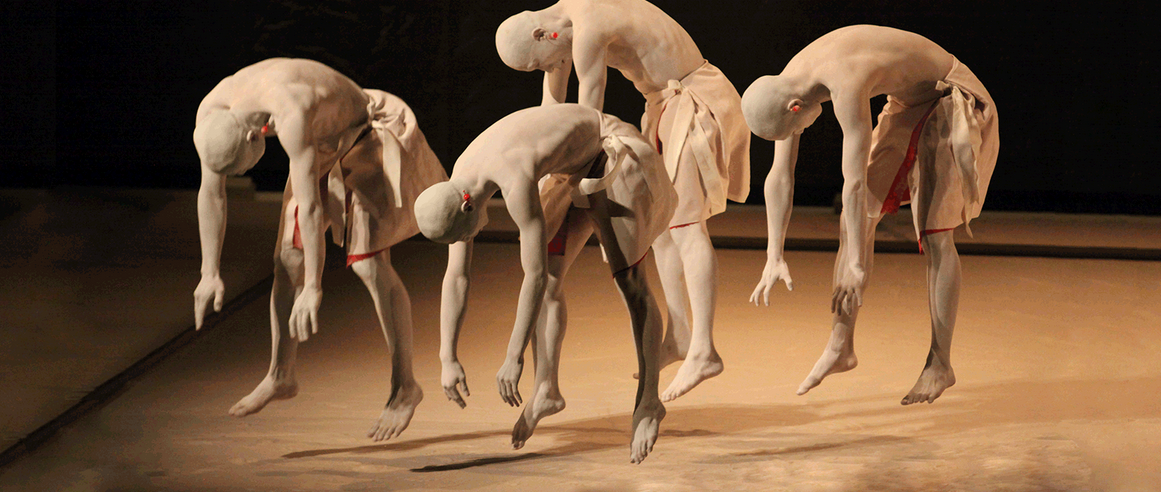

MEGURI